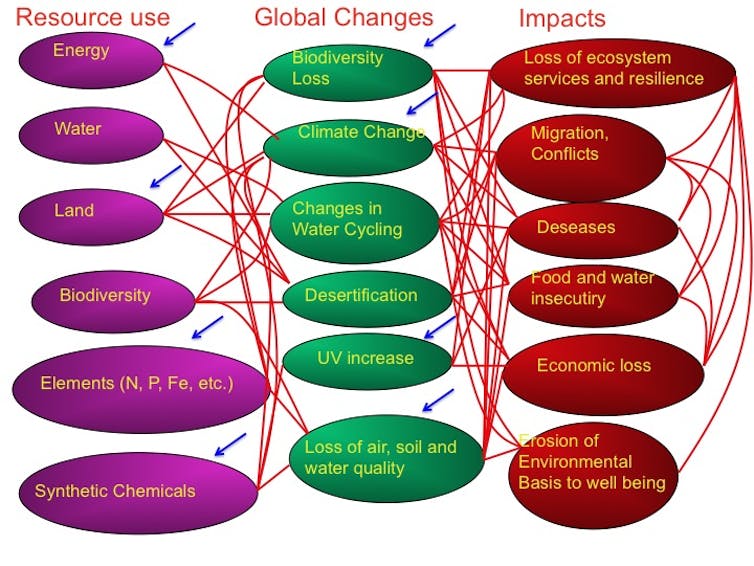The running title of this column, the blue marble, reads “Traveling the world investigating what global change is doing to aquatic ecosystems ”, but what is global change?
I suppose all of us have an intuitive understanding of what this term refers to, but perhaps I should try to articulate my own understanding, acknowledging that there may be different views.
By Global Change I refer to the impact of human activity on the key processes that govern the functioning of the biosphere. These include, but are not limited to, the climate system, the stability of the stratospheric ozone layer, the cycles of elements and materials essential for life (biogenic materials), such as nitrogen, carbon, phosphorus or water, and the balance and distribution of species and ecosystems.
Whereas the effects of human activity on these processes may appear to be independent, these changes are connected by a common driver: the combination of the growth of human population, now exceeding 7 billion people, and the increased per capita consumption of resources, including water, energy, biogenic and synthetic materials, land, and biodiversity.
The global use of resources can be represented by the ecological foot print (shown in a diagram below), typically computed as hectares per capita, or the hectares of land required to produce the resources consumed annually by an average person. The product of the global average ecological foot print and human population size equals the total foot print of humanity. Estimates indicate that since 1986 the total demand of resources by humanity exceeded the surface available to deliver them, indicating that human consumption of resources is based on the use of non-renewable resources, such as fossil water in deep aquifers or fossil fuels, and is, therefore, not sustainable.

The use of resources in excess of the capacity of the Earth System to replenish them leads to changes in the Earth System, including anthropogenic climate change, increased UVB radiation resulting from the decline in stratospheric ozone, changes in the water cycle and land use, eutrophication of coastal and continental aquatic ecosystems, loss of biodiversity, desertification, and an overall decline in the quality of air, water and soil. These changes, in turn, interact with one another, and affect the patterns of resource use by humans, creating feedbacks and blurring the path of cause and effect.
Collectively, these changes impact on society leading to economic losses, migrations, conflicts, risks to human health and lives, compromise water and food security, loss of ecosystem services, reduced resilience of human societies, and a decline of the environmental basis of our well being, as described in the figure attached.
Simple, linear thinking can lead, potentially, to major errors in addressing global change. For instance, the believe that climate change results from use of fossil fuels led to the promotion of biofuels. Yet, large scale production of biofuels is currently the main driver of deforestation in tropical countries, competes with crops for fertile land and water, and requires increased application of fertilizer and chemicals to protect the crops, thereby generating added impacts on the climate system - from emissions of green-house gases from deforestation and NO2 emissions from fertilized soils, and fueling other components of global change.
The complexity of this web of interactions defies the capacity of science to predict the outcome of these simultaneous changes with the associated interactions and synergies, and requires an approach based on complex system analyses and the consideration of non linear responses and threshold effects.
Ultimately, however, the root of these processes rely on our patterns of consumption of resources, which we can manage, at least at the individual level. Our power to mitigate global changes relies on the options we exert every day as consumers, even to a larger extent than that we can exert with our votes.
The world leaders that will ultimately manage this situation are not in political offices. The effective leaders that have the capacity to slow down and stop global change visit us every time we look ourselves in the mirror.
